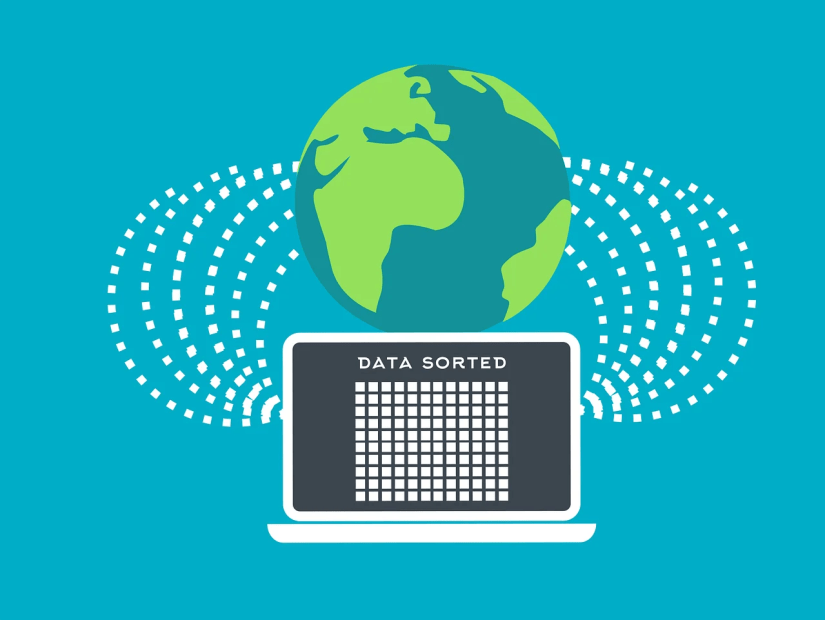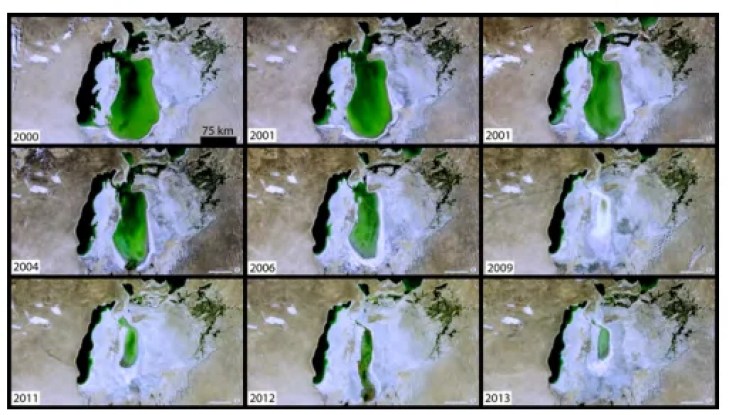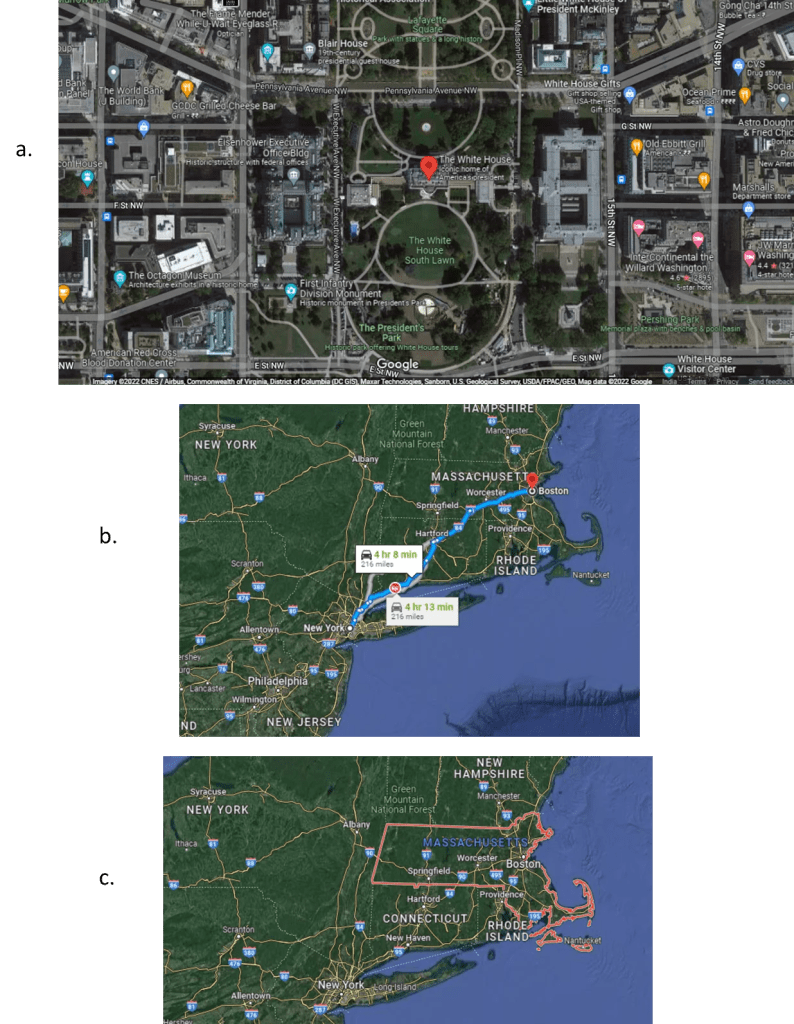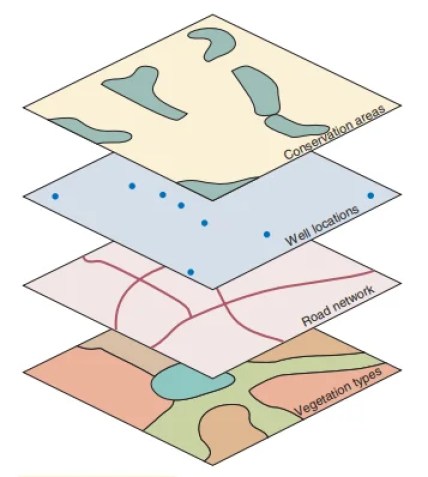Introduction
Most of the time, we use our geographic knowledge for everyday activities like figuring out a route in a new location or looking for the nearest diner. Spatial information has a more significant influence on our lives than we know since it helps us generate the food we eat, the energy we use, the clothing we wear, and the entertainment we enjoy.

Since spatial information is so important, we have built tools called geographic information systems (GIS) to help us with geographic knowledge. A GIS supports the collection and use of spatial data (we will use the acronym GIS to refer to both the singular, system and the plural, system).
GIS components are purely technological; these include the following:-
- Space-age data collectors,
- Advanced communications networks, and sophisticated computing.
Other GIS components are very simple, for example, a pencil and paper are used to field-verify a map.
Modern electronics have significantly changed how we obtain and use geographical data over the past five decades, and GIS hardware and software are two prime examples of these technological advancements. Over the past three decades, there has been an increase in the collection and processing of geographical data, which has continued to advance.
In any description of a GIS, “where” and “what” are key terms. GIS and spatial analyses are concerned with both the features’ characteristics and qualities (the “what”) as well as their absolute and relative position (the “where”). Important spatial objects like rivers and streams can have their positions, sizes, flow rates, and water quality documented. These characteristics frequently depend on the spatial arrangement of significant features, such as land use/land cover above or nearby streams (the terms “land use” and “land cover” refer to how land is used by humans and, on the other hand, “land cover” reflects how land is covered by physical features”). These geographical linkages may be analyzed and displayed with the help of a GIS.
What is GIS
Since the 1980s, the use of GIS has increased significantly. GIS is utilized by a wide range of academic and technological fields because it offers universal tools for managing geographical data, not because inter-disciplinary collaboration is required (Burrough, 1995).
There are several definitions of GIS that are in use. in the simplest way we may define the term GIS as “an organized collection of computer hardware, software, geographic data, and employees designed to efficiently gather, store, update, analyze, and display all types of geographically linked information.”

we may also define a GIS as A computer system that can store and use data defining locations on the surface of the earth is referred to as a GIS.
The essential components of a standard GIS are data input, a link to a geographical-attribute database, spatial analysis, and visualization.
Spatial data are gathered onto one platform in a GIS so that multiple operations may be performed as shown in the following figure:-

Operating a GIS has a lot of benefits. For example,
A GIS often connects several sets of data; it also perfectly matches two or more geo-referenced files at once and allows for numerous procedures to be performed inside the files in a relatively short amount of time.
By comparing thematic maps, ground surveys, and remotely sensed photographs of the same region, it is possible to assess the degree of the spatial relationship between landscape aspects.
If multiple data sets in maps can be overlaid, interpretation is made simple, and the superimposition of data sets in a GIS is widespread.
For calculating various pixels, tables may be made, maps can be crossed over, and tables and maps can be linked. In a GIS context, information based on the user’s interests may be possible.
The quantitative location of significant features, as well as their characteristics and properties, are topics covered by spatial analysis and GIS. Mount Everest is in Asia, Timbuktu is in Mali, and the Titanic is at the bottom of the Atlantic. By recording their coordinates values that specify where these features are on Earth—a GIS quantifies these places. The depth of the water body, the population of the capital city of a country, the height of Mount Everest, and any other identifying attributes of any geographical feature may likewise be recorded using the GIS.
Why do we need GIS
GIS is an important tool for industry, administration, education, and non-profit organizations, and its usage is now required in many contexts. , GIS has been important in solving some of our most urgent social issues. They have been used to fight crime, conserve endangered species, decrease pollution, deal with natural disasters, treat epidemics, and enhance public health.
GIS provides essential information on where and who is affected by environmental problems, which helps us detect and solve them. GIS may assist us in determining the origin, location, and severity of negative environmental impacts as well as help us create workable plans for controlling and reducing environmental harm. Following is an example of a GIS application for monitoring environmental degradation.

Public organizations have adopted GIS because of legislative mandates, and because GIS aid in governmental functions. For example, emergency service vehicles are regularly dispatched and routed using GIS.

Many businesses adopt GIS for increased efficiency in the delivery of goods and services. Retail businesses locate stores based on several spatially related factors.
Components of GIS
Hardware, software, data, people, and purposes make up GIS. For GIS to be used effectively, these components must be developed and integrated properly.
Hardware
The hardware base of the majority of GIS consists of a quick computer, big data storage capacity, and a high-quality large display. Because spatial analyses are frequently used in wide regions or at high spatial resolutions, a fast computer is necessary. In our geographical study, calculations frequently need to be performed many times for each location.
The hardware of a GIS is composed of
- Input devices.
- Processing and storage devices.
- Output devices.
GIS software provides the tools to manage, analyze, and effectively display and disseminate spatial information. Coordinate gathering and manipulation are a necessary part of GIS. Additionally, we need to gather either qualitative or quantitative data on the non-spatial characteristics of geographic features. Tools are necessary so that we can modify the data to generate and extract the information we need, view and update it, and create the items required to communicate the knowledge we have gained.
There are a few hundred GIS systems in existence. Web sites of some of the major international GIS software vendors are:
- Bentley (United States): www.bentley.com
- Caris (Canada): www.caris.com
- Erdas (United States): www.geosystems.de
- Esri (United States): www.esri.com
- Genasys (Australia): www.genasys.com
- GE-Smallworld (United Kingdom): www.gedistalenergy.com/GIS.htm
- Idrisi (United States): www.clarklabs.org
- Intergraph (United States): www.intergraph.com
- MapInfo (United States): www.mapinfo.com
- PCI Geomatics (Canada): www.pcigeomatics.com
- SICAD (Germany): www.aed-sicad.de

Data
There are two major types of GIS data sets vector and raster. Each spatial feature’s location in a vector model is specified by its X and Y coordinates. A single X-Y coordinate pair serves to describe a single point on a feature. Points are registered in point maps by coding their X and Y coordinates locations. A set of X and Y coordinates (points) that most accurately represent a line’s properties are used to record it. The points are connected by straight lines. Areas are represented by their borders or boundary lines, which are in fact segments, with the difference that all segments are enclosing areas.


Spatial data are arranged in grid cells, often known as pixels a term derived from picture elements—in a raster model. In raster-based GIS, analyses are typically carried out on a per-pixel basis. Pixels are the basic units for which information is explicitly recorded. Each pixel is assigned only one value. A point is described in the raster model by the position of a single pixel. A row and column number define the position of each cell. Scanned aerial photographs, satellite imageries, or scanned pictures all are raster products.


People
Users are one of the very important components of any working GIS system. There are two types of people included in GIS: 1, a GIS analyst, expert, or operator who prepares different usable GIS layers, and 2. The user who uses the needed GIS layer for different applications.

Purpose (Application)
Without any purpose of the application, the function of GIS is not possible.
Following are examples of the application areas of GIS in different fields:-
- Environmental management and conservation
- Defense and intelligence purposes
- Governmental administration
- Resource management in agriculture and forestry
- Geophysical exploration
- Cadastral management
- Telecommunications
- Utility management
- Business applications
- Construction projects






